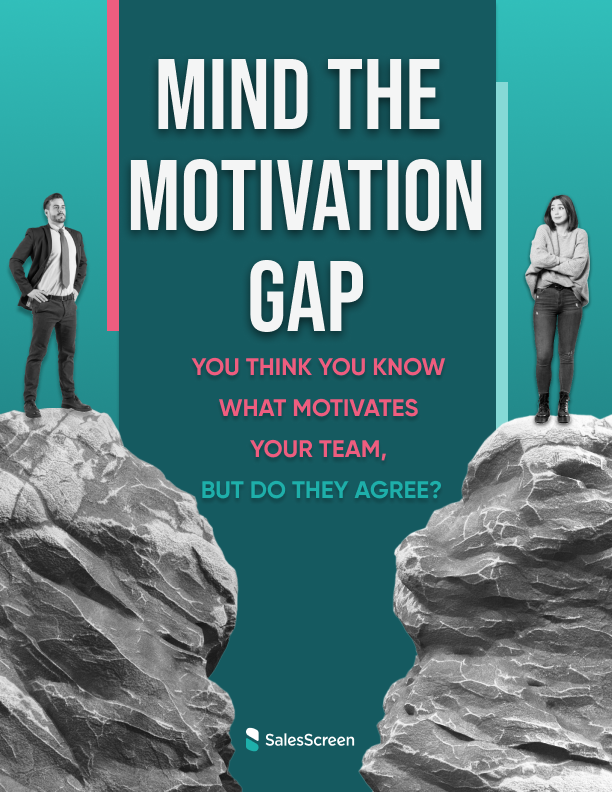
How to build a great sales culture wherever you are
Remote and hybrid sales teams are here to stay, and leaders who want to build a positive, engaging culture will have to learn some new tricks. Companies with extremely healthy cultures were 1.5x more likely to report average revenue growth of more than 15% for the past three years, according to a survey by Oxford Economics. That’s because happy employees are 56% more productive, 50% less likely to leave their jobs, and take 75% fewer sick days.

If you’re a sales leader dreaming about an all-hands return to the floor, you might want to hit the snooze button. “Normal” office life looks more and more like a dream.
For many, the chatter of the sales floor has already faded forever beneath the patter of company Slack channels. Just 9% of white-collar workers said they wanted to return to traditional office life.
Today’s tech-enabled, pandemic-enlightened employees want the flexibility to work from home, at least sometimes — along with more autonomy, collaboration, better tools, and more rewards.
To keep scattered sales teams engaged, leaders will have to build cohesive, engaged, and productive cultures at a time when the usual go-to tactics may not apply. It won’t be easy, but we’re here to help
And rest assured, the ROI is good.

Healthy culture pays dividends
48% of CFOs say the loss of corporate culture is the top challenge of remote work, more than any other C-Suite respondent pool. There’s a good reason for that: a healthy culture pays dividends.

Healthy culture = revenue growth
1.5x companies with extremely healthy cultures were more likely to report average revenue growth of more than 15% for the past three years, according to a survey by Oxford Economics.

Healthy culture increases stock prices
2.5x public companies with extremely healthy cultures were more likely to report significant stock price increases over the past year.
Hustle culture is dead
Nearly 20 years ago, a new generation of Internet all-stars rejected the corporate ladder and struck out on their own. The first “startups” not only laid the groundwork for today’s economy, they also reshaped the working world. Instead of drab cubicles, we got open workspaces. Instead of three piece suits, we got hoodies and denim.
And instead of the 9 to 5, we got “hustle culture,” a go-hard-or-go-home ethos that glorified overwork. “Grit” and “resilience” became commonplace as company values that emphasized the importance of outlasting your peers.
Focus on experiential—not environmental—elements of culture.
Meanwhile, “fun” office perks like foosball tables, coffee bars, and catered lunches became commonplace. Furnishings became more stylish and comfy. Designers brought outdoor elements inside—natural light, bamboo accents, and green walls. Together they made for a more inviting workplace; one you didn’t need to leave.
And that was part of the point. The culture shaped the environment, which executives then confused for culture. Hustle-based culture was already dying in 2019 when the pandemic put a stake in its heart. But confusion over what does and doesn’t make a company culture persisted.
“A lot of times organizations do things because everybody else is doing them versus figuring out whether that’s important for their culture,” said Erica O’Malley, a partner and organizational strategy expert for consulting firm Grant Thornton, which authored a study on the ROI of workplace culture.
So how can leaders approach building a strong culture among employees who are here, there, and everywhere? The key is to focus on experiential—not environmental—elements of culture. Sales organizations and their leaders will have to adopt philosophies and practices that not only drive performance and productivity, but make their employees’ work experience fulfilling, inclusive, and rewarding.
How to build a great sales culture wherever you are
Culture is now experiential. Sales organizations and their leaders should craft culture that supports the key dimensions of a healthy workplace.
Communication + Collaboration
A culture of individual achievement may power star sellers, but asking reps to collaborate on reaching team goals will motivate middle performers and inspire departments to work together. To do that for scattered teams, you’ll need to put some thought into how—and where—you communicate.
- Communicate consistently: Daily stand-up meetings on the floor aren’t an option if part of your team is distributed.
- Write your unwritten communication rules: To promote healthy communication among distributed teams, you’ll have to outline your team’s established norms.
- Assign ownership to individuals and teams: Invite cross-team communication by asking the people closest to a project to give updates.
Autonomy + Accountability
Sales leaders have a vested interest in their reps sticking to processes that build pipeline. But they’ve become accustomed to doing so in a way that works for them. Giving them the freedom to put their own spin on it builds trust, as long as it also delivers results.
- Clearly state expectations: Set goals, establish timelines, and set deadlines with input from the people who will be shouldering the work, then ensure those expectations are shared in common channels.
- Understand individual needs: Work from home has given people unprecedented flexibility to integrate work into their larger lives, but that doesn’t look the same for everyone
Community + Purpose
In a healthy workplace community, team members are willing to collaborate, share new ideas, and work together toward a shared purpose. Managers will have to work harder to build the esprit de corps that evolves naturally when everyone is on-site.
- Make connection a ritual: Pssst… No one likes Zoom happy hour. Trade pointless “forced fun for regular, purposeful team connections, said Lisa Conn, co-founder of team engagement platform Gatheround.
- Communicate your shared purpose: Company values are about how you get your work done. Purpose is why you do it.
- Poll your team: This isn’t your Dad’s sales team. Sure, 87.5% of sales managers are white and 69% are male, but their teams are more diverse than ever.
Onboarding + Mentorship
Onboarding a distributed team is tough. While in-office employees have immediate access, managers can’t be there to answer questions as they arise for remote sellers. Likewise, mentorship between senior sellers and newbies are unlikely to develop spontaneously and will need a gentle push from leadership.
- Encourage junior sellers to work on-site: While Gen Z was raised with the very platforms that facilitate remote work, there’s unquestionable value in the office experience for younger workers.
- Create incoming classes: Slocum groups new hires together to build camaraderie and build trust.
- Mentorship shouldn’t be mandatory: If on-site mentorship isn’t an option, pairing vets and new hires can work—with a caveat.
Rewards + Recogmition
The number one reward for a job well done is money, especially in sales. In fact, 63% of workers who quit their jobs in 2021 said low pay was one driving force, according to Pew Research. But “cha-ching” isn’t enough. 57% of workers said they felt disrespected at work, a hallmark of a toxic culture. For social animals like sellers, leaders must ensure there are social rewards too. And they can’t be limited to in-office workers.
- Pair intrinsic and extrinsic rewards: Some people feel compelled to buckle down and complete hard tasks because they have some internal—or intrinsic—motivation.
- Keep them winning: Meeting monthly and quarterly goals is vital, but to keep your reps engaged, set up varied competitions that give sellers at all levels a chance to win.
- Encourage positive chatter: “Competitions can get very tough with a lot of red lines,” said TrainYo’s Slocum

How to build sales culture for scattered teams
If you’re a sales leader dreaming about an all-hands return to the floor, you might want to hit the snooze button. “Normal” office life looks more and more like a dream.
Learn more
See all Resources
Mind The Motivation Gap
You think you know what motivates your team, but do they agree? Motivating a sales team is challenging in the best of times. During the last three years, however, leaders have had to do so even as they navigated global calamity and workforce changes.
View content

How To Build Sales Culture For Scattered Teams
Remote and hybrid sales teams are here to stay, and leaders who want to build a positive, engaging culture will have to learn some new tricks
View content

How to build sales culture for scattered teams
Remote and hybrid sales teams are here to stay, and leaders who want to build a positive, engaging culture will have to learn some new tricks.
View content

Stop burnout in its tracks
Burnout—if you’ve been there, you know. And too many have. In fact, a recent survey from Indeed.com showed that 67% of all workers surveyed said burnout has worsened in the pandemic.
View content

From Pain Points to On Point In 2022
4 of your most common challenges, solved.
View content

Love the Game
How Gamification Inspires Sales Teams to Do More and Have Fun
View content